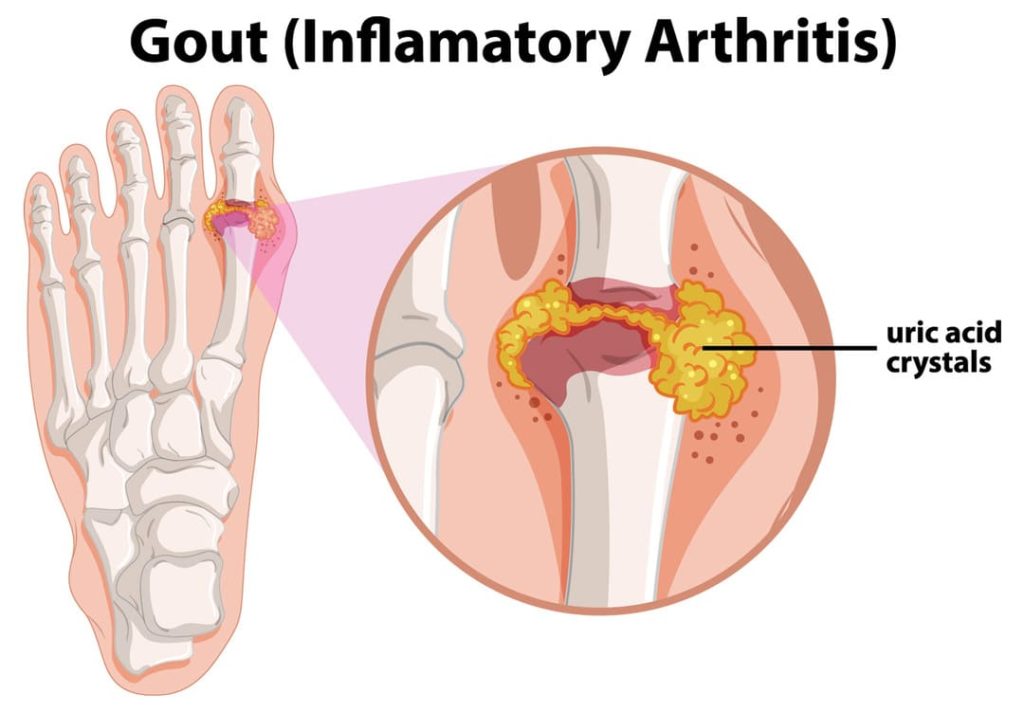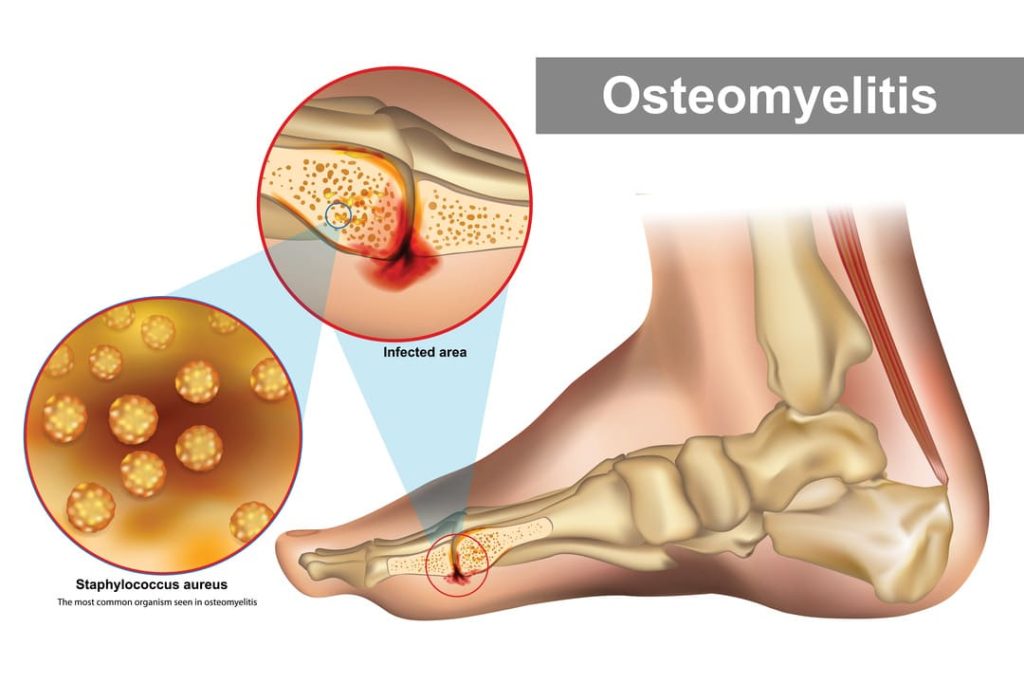Looking for Expert-Level VA Claim Answers?📱Call Us Now! 737-295-2226
Just about every physical thing you do in the military can cause an ankle injury.
Whether running on asphalt multiple days a week, long ruck marches, standing in line all day, rappelling out of helicopters, or jumping out of airplanes, your ankles take a beating throughout your military career.
This leads many veterans with ankle issues to ask, “Do I qualify for an ankle VA disability rating?“
In this Ultimate Guide, we will examine how you can get the ankle VA disability rating and benefits you deserve!
We’ll break down how the VA rates ankle injuries and pain, how to file an ankle VA disability claim, and much more.
Let’s get started.
- How to Qualify for VA Disability Benefits for Ankle Issues
- Ankle VA Disability Rating: Limitation of Motion
- Ankle VA Disability Rating: Replacement (Prosthetic)
- Ankle VA Disability Rating: Tarsal Joint Limitation of Motion
- Ankle VA Disability Rating: Heel and Talus Bone
- Ankle VA Disability Rating: Removal of the Talus Bone
- Ankle VA Disability Rating: Osteomyelitis
- Ankle VA Disability Rating: Tuberculosis
- Ankle VA Disability Rating: Arthritis
- Ankle VA Disability Rating: Malignant Neoplasm
- VA Rating for Ankle Pain
- Can I Get a VA Disability Rating for Ankle Instability?
- How to Apply for VA Benefits
- NEED MORE ASSISTANCE?

You DESERVE a HIGHER VA rating.
Take advantage of a VA Claim Discovery Call with an experienced Team Member. Learn what you’ve been missing so you can FINALLY get the disability rating and compensation you’ve earned for your service.
How to Qualify for VA Disability Benefits for Ankle Issues
When it comes to the VA, having ankle problems doesn’t qualify you for an ankle VA disability rating unless it was caused or made worse by your military service.
This is known as service connection.
Every disability, whether in your ankle or another part of your body, needs to be service-connected for you to be awarded VA compensation and other benefits.
Service connection is proven according to the Caluza Triangle.

The name Caluza Triangle comes from a famous 1995 US Court of Appeals for Veterans Claims case named Caluza v. Brown.
During this case, the judges determined that three elements are needed in order for a disability to be service-connected:
- A medical diagnosis of a disability. You can’t get VA benefits for a condition that hasn’t been diagnosed.
- Evidence of an in-service event, injury, disease, or aggravation. You need to show that something happened during and because of your service that caused your disability or made it worse.
- A link (also known as a nexus) between your condition and the in-service event, injury, or illness you believe caused or aggravated it. In other words, your doctor needs to be able to explain how the in-service event, injury, or illness caused your condition. A nexus letter can help with this.
Once your condition is service-connected, the VA will evaluate your symptoms according to the appropriate rating schedule and award you a rating percentage.

The Ankle VA Rating Schedule
What ankle VA rating you get depends entirely on the severity of your symptoms. Most people think the VA rates disabilities, but what they actually rate are the symptoms produced by your disability.
The worse your symptoms, the higher your rating, and vice versa.
They use the Veteran Affairs Schedule for Rating Disabilities (VASRD) when deciding what rating your symptoms warrant. The VASRD has a table for every disability covered by the VA that shows what rating corresponds to what symptoms. We call these “rating charts.”
In the rest of this post, we lay out all the possible ankle VA disability ratings and their associated rating chart.
Ankle VA Disability Rating: Limitation of Motion
As we said earlier, the VA doesn’t rate disabilities but the symptoms produced by a disability.
This is why the VA sometimes evaluates different disabilities using the same rating chart. If two conditions produce the same symptoms, the VA creates one rating chart, not two.
Limitation of motion in the ankle is one example. Several disabilities can degrade your ankle’s range of motion, and they’re all evaluated under either DC 5270 or DC 5271:
| 5270 Ankle, ankylosis of | Rating % |
| In plantar flexion at more than 40°, or in dorsiflexion at more than 10° or with abduction, adduction, inversion or eversion deformity | 40 |
| In plantar flexion, between 30° and 40°, or in dorsiflexion, between 0° and 10° | 30 |
| In plantar flexion, less than 30° | 20 |
NOTE: Ankylosis is another word for limitation of motion that refers to the stiffness of a joint due to abnormal adhesion and rigidity of the bones.
| 5271 Ankle, limited motion of | Rating % |
| Marked (less than 5 degrees dorsiflexion or less than 10 degrees plantar flexion) | 20 |
| Moderate (less than 15 degrees dorsiflexion or less than 30 degrees plantar flexion) | 10 |
Below are FOUR conditions the VA evaluates using the rating charts for DC 5270 and DC 5271:
Osteoporosis of the Ankle
Osteoporosis is a condition that causes the bones to become weak and brittle. People with severe osteoporosis can get seriously injured by a shortfall.
The VASRD code for osteoporosis is DC 5013, but it’s evaluated using the rating chart for DCs 5270 or 5271.
Osteomalacia of the Ankle
Osteomalacia is similar to osteoporosis in that it causes your bones to weaken. That’s why it’s also known as “soft bones” disease.
The primary cause of osteomalacia is vitamin D deficiency. If you don’t get enough vitamin D, your body can’t absorb calcium, which, if left untreated, can have a huge impact on bone health.
Osteomalacia’s diagnostic code is 5014. But just like osteoporosis, osteomalacia is rated under limitation of motion (DCs 5270 and 5271).

Gout in the Ankle
Gout is a type of arthritis that causes sudden and severe pain in your joints. It’s caused by an accumulation of urate crystals inside the joint.
Urate crystals form when there is too much uric acid in your blood and your body has nowhere else to put it. Your body produces uric acid when it breaks down purines, which are found in foods like alcoholic beverages, seafood, fish, and shellfish.
The actual diagnostic code for gout is DC 5017. However, the VA evaluates it using the ankle limitation of motion charts (DCs 5270 or 5271).
VA Disability Rating for Ankle Tendonitis
Tendonitis is inflammation of the tendons that connect muscle to bone. It is usually caused by an injury or by repeated use over time.
The diagnostic code for tendonitis is DC 5024. But like the previous three conditions, tendonitis is rated using the rating chart for DC 5270 or 5271.
Ankle VA Disability Rating: Replacement (Prosthetic)
If your ankle joint is replaced with a prosthetic, you’ll be rated under DC 5056:
| 5056 Ankle replacement (prosthesis) | Rating % |
| Prosthetic replacement of ankle joint: | |
| For 1 year following implantation of prosthesis | 100 |
| With chronic residuals consisting of severe painful motion or weakness | 40 |
| With intermediate degrees of residual weakness, pain or limitation of motion rate by analogy to 5270 or 5271. | |
| Minimum rating | 20 |
As you can see, it’s possible your ankle replacement could also be rated under limitation of motion. It just depends on your specific symptoms.

Ankle VA Disability Rating: Tarsal Joint Limitation of Motion
The Tarsal Joint is made up of 3 different bones in the ankle:
- The Navicular
- The Calcaneus (heel bone)
- And the Talus
Limitation of motion of the Tarsal joint is rated under DC 5272:
| 5272 Subastragalar or tarsal joint, ankylosis of | Rating % |
| In poor weight-bearing position | 20 |
| In good weight-bearing position | 10 |
Ankle VA Disability Rating: Heel and Talus Bone
The term used for this disability in the VASRD is “malunion of os calcis or astragalus.”
In English, this refers to when the heel bone and talus bone don’t join correctly, or when a fracture doesn’t heal right.
One possible symptom of this disability is an ankle deformity, which is rated under DC 5273:
| 5273 Os calcis or astragalus, malunion of | Rating % |
| Marked deformity | 20 |
| Moderate deformity | 10 |
Ankle VA Disability Rating: Removal of the Talus Bone
Removal of the Talus bone is called an astragalectomy. This is a specific type of surgery that’s rated under DC 5274:
| 5274 Astragalectomy | Rating % |
| Surgical removal of Talus bone | 20 |

Ankle VA Disability Rating: Osteomyelitis
Osteomyelitis is an infection of the bone that can cause:
- Fever
- Fatigue
- Swelling, warmth, and redness over the area of the infection
- Pain in the area of the infection
Because the VA considers the ankle to be a major joint, osteomyelitis of the ankle can be rated under Diagnostic Code (DC) 5000:
| 5000 Osteomyelitis, acute, subacute, or chronic: | Rating % |
| Of the pelvis, vertebrae, or extending into major joints, or with multiple localization or with long history of intractability and debility, anemia, amyloid liver changes, or other continuous constitutional symptoms | 100 |
| Frequent episodes, with constitutional symptoms | 60 |
| With definite involucrum or sequestrum, with or without discharging sinus | 30 |
| With discharging sinus or other evidence of active infection within the past 5 years | 20 |
| Inactive, following repeated episodes, without evidence of active infection in past 5 years | 10 |
| Note (1): A rating of 10 percent, as an exception to the amputation rule, is to be assigned in any case of active osteomyelitis where the amputation rating for the affected part is no percent. This 10 percent rating and the other partial ratings of 30 percent or less are to be combined with ratings for ankylosis, limited motion, nonunion or malunion, shortening, etc., subject, of course, to the amputation rule. The 60 percent rating, as it is based on constitutional symptoms, is not subject to the amputation rule. A rating for osteomyelitis will not be applied following cure by removal or radical resection of the affected bone. | |
| Note (2): The 20 percent rating on the basis of activity within the past 5 years is not assignable following the initial infection of active osteomyelitis with no subsequent reactivation. The prerequisite for this historical rating is an established recurrent osteomyelitis. To qualify for the 10 percent rating, 2 or more episodes following the initial infection are required. This 20 percent rating or the 10 percent rating, when applicable, will be assigned once only to cover disability at all sites of previously active infection with a future ending date in the case of the 20 percent rating. | |
If you have these symptoms in either of your ankles and think your military service is responsible, you should consider filing a VA claim.
Ankle VA Disability Rating: Tuberculosis
Tuberculosis is best known as a respiratory condition, but it can also spread to other parts of the body, including the bones in your ankles.
Symptoms of a Tuberculosis infection in a bone or joint include:
- Pain and tenderness around the affected bone area
- Loss of function around the affected bone or joint
- Swelling around the bone or joint
- Joint deformity
- Bone deformity
- Fever
- Night sweats
The VA rates Tuberculosis under DC 5001:
| 5001 Bones and joints, tuberculosis of, active or inactive: | Rating % |
| Active | 100 |
| Inactive: See §§ 4.88c and 4.89 | 0 |
Ankle VA Disability Rating: Arthritis
Arthritis is a condition that affects the joints and is caused by wear and tear from everyday life or from high-impact activities, such as jogging.
Symptoms of arthritis include:
- Pain
- Stiffness
- Swelling
- Redness
- Decreased range of motion
The VA rates arthritis of the ankle under DCs 5002 or 5003:
| 5002 Multi-joint arthritis (except post-traumatic and gout), 2 or more joints, as an active process: | Rating % |
| With constitutional manifestations associated with active joint involvement, totally incapacitating | 100 |
| Less than criteria for 100% but with weight loss and anemia productive of severe impairment of health or severely incapacitating exacerbations occurring 4 or more times a year or a lesser number over prolonged periods | 60 |
| Symptom combinations productive of definite impairment of health objectively supported by examination findings or incapacitating exacerbations occurring 3 or more times a year | 40 |
| One or two exacerbations a year in a well-established diagnosis | 20 |
| Note (1): Examples of conditions rated using this diagnostic code include, but are not limited to, rheumatoid arthritis, psoriatic arthritis, and spondyloarthropathies. | |
| Note (2): For chronic residuals, rate under diagnostic code 5003. | |
| Note (3): The ratings for the active process will not be combined with the residual ratings for limitation of motion, ankylosis, or diagnostic code 5003. Instead, assign the higher evaluation. | |
| 5003 Degenerative arthritis, other than post-traumatic: | Rating |
| With X-ray evidence of involvement of 2 or more major joints or 2 or more minor joint groups, with occasional incapacitating exacerbations | 20 |
| With X-ray evidence of involvement of 2 or more major joints or 2 or more minor joint groups | 10 |
| Degenerative arthritis established by X-ray findings will be rated on the basis of limitation of motion under the appropriate diagnostic codes for the specific joint or joints involved (DC 5200 etc.). When however, the limitation of motion of the specific joint or joints involved is noncompensable under the appropriate diagnostic codes, a rating of 10 pct is for application for each such major joint or group of minor joints affected by limitation of motion, to be combined, not added under diagnostic code 5003. Limitation of motion must be objectively confirmed by findings such as swelling, muscle spasm, or satisfactory evidence of painful motion. In the absence of limitation of motion, rate as shown above: | |
| Note (1): The 20% and 10% ratings based on X-ray findings, above, will not be combined with ratings based on limitation of motion. | |
| Note (2): The 20% and 10% ratings based on X-ray findings, above, will not be utilized in rating conditions listed under diagnostic codes 5013 to 5024, inclusive. | |
Ankle VA Disability Rating: Malignant Neoplasm
“Malignant Neoplasm” is another term for a cancerous tumor. Tumors are clumps of abnormal tissue growth. Benign ones don’t grow and spread to other tissues in the body, but malignant ones do.
Malignant neoplasms can take root in any part of your body, including the tissues and bones in and around your ankles.
The VA rates malignant neoplasms under DC 5012:
| Rating % | |
| 5012 Bones, neoplasm, malignant, primary or secondary | 100 |
| Note: The 100 percent rating will be continued for 1 year following the cessation of surgical, X-ray, antineoplastic chemotherapy, or other prescribed therapeutic procedures. If there has been no local recurrence or metastases, the rating is based on residuals. | |
Notice the note in the table that says the rating will “be continued for one year following cessation.” This just means you’ll be rated at 100% for at least a year after your malignant neoplasm goes away.
After that period, you could lose the 100% rating. If your neoplasm has returned, you’ll keep 100%. If it hasn’t returned, you’ll be reevaluated and given a rating based on the symptoms caused by the treatment you received for the neoplasm (for example, the fallout of chemotherapy).

VA Rating for Ankle Pain
Ankle pain can be caused by just about every disability we covered in the sections above.
You will need a more specific diagnosis if you want to pursue an ankle pain VA rating.
What’s the Highest VA Disability Rating for Ankle Pain?
The highest ankle pain VA rating is 100%—dependent on which VA-rateable condition is causing your ankle pain.
Look back over the rating charts we discuss in this post and you’ll see that osteomyelitis, active tuberculosis in the ankle, multi-joint arthritis, malignant neoplasm in the ankle, and an ankle joint replacement can all earn you a 100% VA rating for ankle pain.
Can I Get a VA Disability Rating for Ankle Instability?
Yes. If you experienced an ankle injury during your military service that caused you lingering ankle instability, you may qualify for VA benefits. This eligibility may extend to cases where a pre-existing ankle injury was exacerbated by active duty service.
Understanding Ankle Instability
Ankle instability is characterized as a persistent condition often triggered by an acute injury, such as an ankle sprain. There are two primary types: mechanical and functional instability.
Mechanical instability occurs when the ankle lacks physical stability and is unable to support weight.
Functional instability refers to a recurring sensation that the ankle might give way unexpectedly.
Ankle instability can result in pain and difficulty in performing everyday activities, particularly those requiring prolonged periods of standing or walking. Common symptoms associated with ankle instability include:
- Fear of rolling the ankle while walking
- Pain
- Swelling, bruising
- Loss of balance
- Walking with a noticeable limp
If you have any of these symptoms and have a history of ankle injuries related to your military service, pursuing a VA disability claim with well-documented evidence is crucial to getting the ankle VA rating and benefits you deserve.

How to Apply for VA Benefits
You can read our blog, How to File a VA Claim Online (17-Step Tutorial), for comprehensive instructions for filing a claim, but here are the basics:
- Submit an intent to file. This helps make sure you have the earliest effective date possible.
- Gather your evidence and relevant records, such as your DD-214, current diagnosis, in-service records, medical records, and Nexus Letter or Independent Medical Opinion.
- Submit your claim online, in person at a VA regional office, or by mail at
Department of Veterans Affairs
Claims Intake Center
PO Box 4444
Janesville, WI 53547-4444
- Await a decision. Expect the VA to schedule a few doctor appointments for you.
- Appeal if necessary (if you were denied or think you deserve a rating increase)
NEED MORE ASSISTANCE?
Most veterans are underrated for their disabilities and, therefore, not getting their due compensation.
At VA Claims Insider, we guide you into control of the claims process so you can get the rating and compensation you’re owed by law. If you’ve filed your VA disability claim and have been denied or have received a low rating—or you’re unsure how to get started—reach out to us!
Our process takes the guesswork out of filing a VA disability claim and supports you in building a fully developed claim (FDC)—so you may increase your rating FAST! Take advantage of a FREE VA Claim Discovery Call.
Learn what you’ve been missing—so you can FINALLY get the disability rating and compensation YOU DESERVE!

Clay Huston
Clay Huston is a former U.S. Army Reserves Blackhawk Pilot and officer. Clay enlisted in the Army in 2013 and was commissioned as a 2LT in 2017 after earning a business degree from the University of Illinois Champaign-Urbana.
Since separating from the military, Clay has pursued a career as a writer. He also runs the nonprofit notfatherless.org, which fundraises for Children’s Homes in Mexico.




